Heaven-Sent: A History of Angel Food Cake
 Wednesday, February 29, 2012
Wednesday, February 29, 2012  Image: YumSugarThis cloudlike cake would naturally be the first choice of mild-mannered angels: light, fluffy, and delicate.
Image: YumSugarThis cloudlike cake would naturally be the first choice of mild-mannered angels: light, fluffy, and delicate.
Now, if you're having trouble wrapping your mind around what Angel Food cake actually is, allow me to help. This delicate cake is painstakingly made with several egg whites whipped until they are stiff and gently folded into fairly typical cake ingredients: cake flour, sugar, vanilla (but no "fat" source such as butter or oil). It also contains cream of tartar, which helps to stabilize the egg whites, keep the cake from browning unevenly, and and does not impart a flavor to the cake. But really, it's the egg whites that are the key to this cake: it is the unique, whip-em-stiff method that allows for the cake's leavening. The resulting cake is light and delicate, making it an ideal canvas for toppings. Usually they are baked in a tube pan--a tall, round pan with a tube up the center that leaves a hole in the middle of the cake (a bundt pan may also be used, but the bumps on the sides of the pan can make removal more difficult, especially considering that the cake pan is not greased for this recipe). As I read here, "The center tube allows the cake batter to rise higher by 'clinging' to all sides of the pan."Image: Wikipedia
But how did we mere mortals come upon this sweet treat?
While some historians claim that early Angel Food cakes were baked by slaves (the reason being that making this cake was labor-intensive, requiring a strong beating arm and lots of labor to whip the air into the whites), many signs point to the cake really planting itself in the common vernacular in Southeastern Pennsylvania, where the cake molds for the famous cake proliferate. "...angel (or angel food) cakes, which some believe evolved as the result of numerous egg whites left over after the making of noodles, may or may not be the brainchild of thrifty Pennsylvania cooks who considered it sinful to waste anything." (American food: The gastronomic story by Evan Jones).
The first recipes do seem to crop up in cookbooks starting in the 1870s, shortly after the invention of a rotary beater. Not coincidentally, the cake also became more common then--much less physical labor involved.
1896 is the year it made its formal debut as “Angel Food Cake”, though, in that year’s updated edition of the Boston Cooking School cookbook. The recipe reads as follows:
"Angel Cake - One cup of flour, measured after one sifting, and then mixed with one teaspoonful of cream of tartar and sifted four times. Beat the whites of eleven eggs, with a wire beater or perforated spoon, until stiff and flaky. Add one cup and a half of fine granulated sugar, and beat again; add one teaspoon of vanilla or almond, then mix in flour quickly and lightly. Line the bottom and funnel of a cake pan with paper not greased, pour in the mixture, and bake about forty minutes. When done, loosen the cake around the edge, and turn out at once. Some persons have been more successful with this cake by mixing the sugar with the flour and cream of tartar, and adding all at once to the beaten egg. "
Other names under which the cake may be seen are: Sponge Cake, Cornstarch Cake, Silver Cake, and/or Snow-drift Cake.
As for my own thoughts on the cake? Confession: I've never completely understood Angel Food Cake. It has always seemed slightly too virtuous, a fat free concoction made of egg whites, sugar, and, seemingly, air. Until, that is, I discovered "Church Spread", defined by CakeLove founder Warren Brown as a "combination of corn syrup or molasses, marshmallow cream and peanut butter...calorie-wise, it's far more sinful than angel food cake"...basically the secret sauce that keeps this light-as-air cake from flying away.
If you want a recipe for Angel Food Cake, click here (also where I got the picture from the top of the post).
Here's a recipe for Church Spread:
- 1 cup light corn syrup
- 1/2 cup peanut butter, smooth
- 1/4 cup marshmallow creme
In a bowl, mix corn syrup, peanut butter and marshmallow creme until thoroughly combined. Store in an air-tight container.










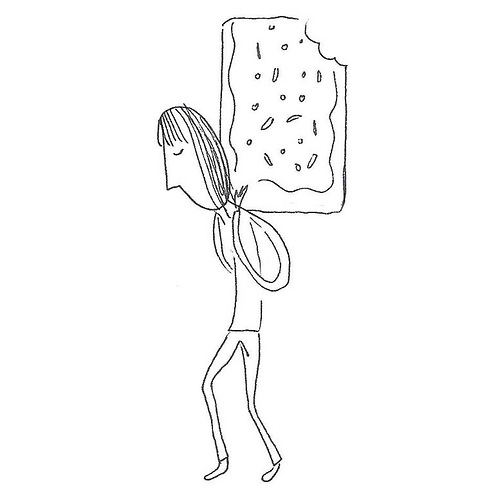


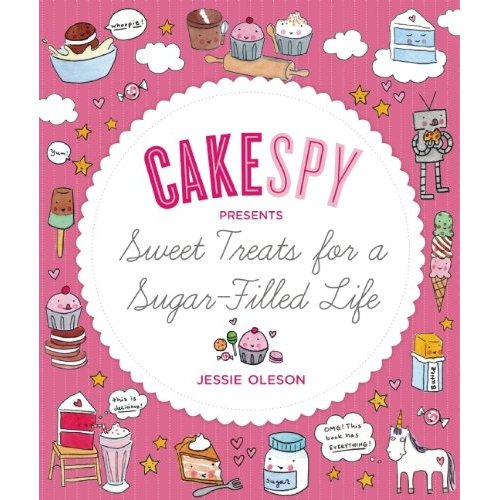
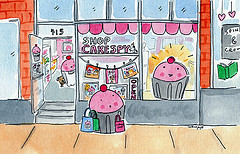


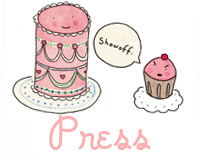

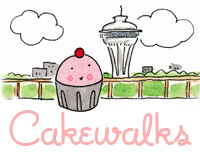
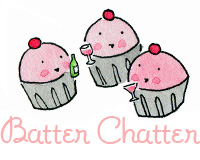




Reader Comments (3)